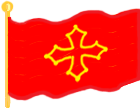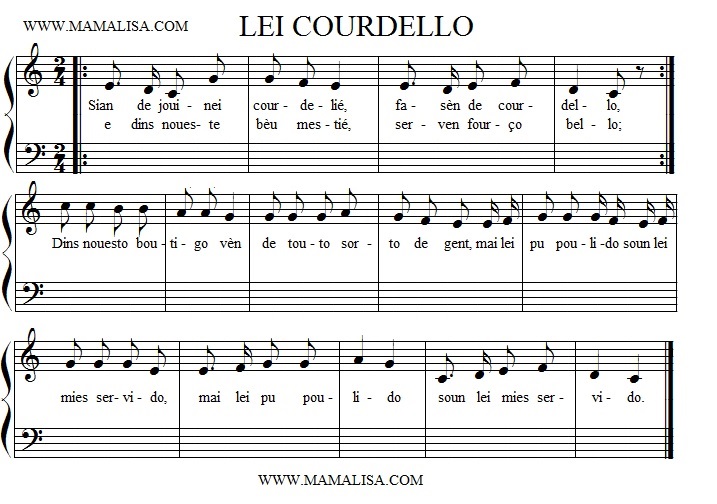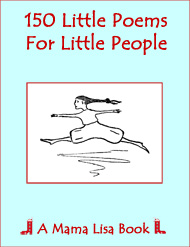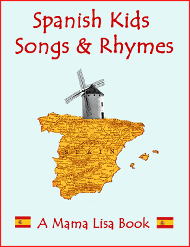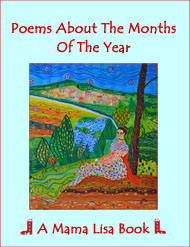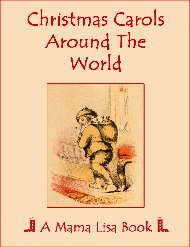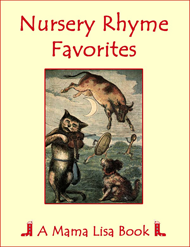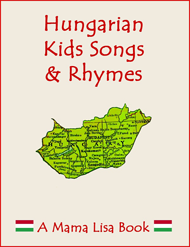Lei courdello
This song is in the Provençal dialect. It dates back to before 1864. The laces are the type used to adjust bodices and other types of women's clothing.
The dance is a Maypole dance like those found throughout Europe.
Lei courdello
The Laces
Circle Dance
Circle Dance
(Occitan)
(English)
Sian de jouinei courdelié
Fasèn de courdello
E dins noueste bèu mestié
Serven foueço bello;
Dins nouesto boutigo vèn
De touto sorto de gènt
Mai lei pu poulido
Soun lei mies servido
Mai lei pu poulido
Soun lei mies servido.
Nouéstei reire dins soun tèms
Fasien de courdello
Chasco maire s'en souvèn
Fiho riserello!
Car segur an pa' oublida
De se faire courdela
Pèr de fin coumpaire
Que se lagnon gaire
Pèr de fin coumpaire
Que se lagnon gaire.
Lei courdello que fasèn
Soun boueno e coumodo
E se fau vous prouvaren
Que soun à la modo
Mai, fiheto aprouchas pas!
De noueste gaùbi doutas?
Se pouden pas plaire
Leis anan desfaire,
Se pouden pas plaire
Leis anan desfaire.
We are the young cordmakers,
We make laces
And in our fine trade,
We serve many beautiful girls.
In our shop
All kinds of people come,
But the prettiest
Are served best,
But the prettiest
Are served best.
In their time, our ancestors
Made laces.
Every mother remembers,
As cheerful girls
They certainly didn't forget
To get hugged*
By fine fellows
Who didn't worry much,
By fine fellows
Who didn't worry much.
The laces we make
Are good and practical.
If we must, we'll prove to you
That they're fashionable.
But girls, you don't come near!
Do you doubt our skill?
If we can't please you,
We'll unravel them,
If we can't please you,
We'll unravel them.
Notes
*This is a play on words. "Enlacer" means both "to interlace" and "to embrace" (or hug).
There are slightly different versions of this song. Some are longer, some are shorter, and some have slightly different lyrics. Here is a longer version:
(Lei fiho)
Sian fiho de courdelié.
Fasèn de courdello.
E dins noste bèu mestié,
Servèn forço bello.
Dins nosto boutigo vèn
De touto meno de gènt,
Mais li pu poulido
Soun li miés servido.
Mais li pu poulido
Soun li miés servido.
(Lei drolle)
Sian de jouíni courdelié.
Fasèn de courdello.
N'i' a pas de pu bèu mestié,
De vido tant bello.
Dins nosto boutigo vèn
De touto meno de gènt.
Li recebèn bèn,
Li recebèn bèn,
Tóuti li pratico
Dins nosto boutigo.
Toutei
Nòsti rèire, dins soun tèms
Fasien de courdello.
Chasco maire s'en souvèn,
Fiho riserello !
Car segur an pas óublida
De se faire courdela
Pèr de fin coumpaire
Que se lagnon gaire.
Pèr de fin coumpaire
Que se lagnon gaire.
Es grando is alentour
Nosto renoumado.
De jouín' e bèu troubadour
N'an douna l'aubado.
D'en Arle à Vidauban,
Caduno a si riban.
Mai nòsti courdello
Soun toujour pu bello.
Mai nòsti courdello
Soun toujour pu bello.
Li courdello que fasèn
Soun bono e coumodo.
E se fau, vous prouvaren
Que soun à la modo.
Mai fiheto aprouchas pas,
De noste gàubi doutas.
Se podon pas plaire,
Lis anan desfaire.
Se podon pas plaire,
Lis anan desfaire.
English Translation
(Girls)
We are cord-makers' daughters,
We make laces,
And in our beautiful trade,
We serve many beautiful girls;
In our shop
All kinds of people come,
But the prettiest
Are the best served,
But the prettiest
Are the best served.
(Boys)
We are young cord-makers,
We make laces
There isn't a more beautiful trade,
A more beautiful life.
In our shop
All kinds of people come,
We receive them well,
We receive them well,
All of our customers
In our shop.
All
Our ancestors in their time
Would make laces,
Every mother remembers it,
As cheerful girls,
Since it's certain they didn't forget
To get themselves hugged
By fine fellows
Who didn't worry much,
By fine fellows
Who didn't worry much.
All around the area
Our fame is great.
Young and beautiful troubadours
Have given us sunrise serenades
From Arles to Vidauban*
Each one has her ribbons,
But our laces
Are always more beautiful,
But our laces
Are always more beautiful.
The laces we make
Are good and useful.
If we must, we'll prove to you
That they're fashionable.
But girls, you don't come near!
Do you doubt our skills?
If we can't please you,
We'll unravel them,
If we can't please you,
We'll unravel them.
* Two Provençal towns, Arles is about 55 miles north-west of Marseilles and Vidauban is about 55 miles west of Nice. The two towns are approximately 100 miles from each other.
*****
Alternate verses that you can find online:
Nouestei reire dins soun tèms (Our ancestors in their time)
Fasien de courdello (Would make laces)
Nautre coum'eli fasen, (As they did, we make,)
Fasen de courdello (Make laces.)
Ah! Es un tant beu mestié (Ah! It's such a fine trade)
Courdelièro, courdelié (Lady cord-makers, man cord-makers)
Canten lei courdello (Let's sing oft the laces)
Vivo lei courdello! (Long live the laces!)
L'ia pas de plus bèu mestié (There's no finer trade)
De vido plus bello (No finer life)
Noustro coume li fasen* (As they did, we make)
Fasen de courdello (Make laces)
Courdellièro, courdellié (Lady cord-makers, man cord-makers)
Aco es un poulit mestié (This is a fine trade)
Canten lei courdello (Let's sing of the laces)
Vivo lei courdello! (Long live the laces!)
*This line is obviously a wrong spelling from a mishearing of the same line in the previous verse.
Game Instructions
The dance should be performed by an equal number of men and women. They form a circle around a Maypole, often fixed on the ground by some device. Ribbons are tied at the top of the pole, one for each dancer. They're usually red and yellow as the colors of the Provence flag are red and yellow ("blood and gold"). The dancers hold their ribbons in their right hands.
Each part of the dance consists of interweaving clock-wise on one verse and then unweaving counter-clockwise on the next verse. Below are possible four steps for this dance. The last one is almost always performed. (Sometimes the 1 and last verse will be performed. Sometimes the 2nd and last steps. Sometimes just the last step.)
1. Each couple turns around each other, bringing their arm up once and down once so that their ribbons get interwoven around each other. Then they turn in the opposite direction to unweave them.
2. They all walk around the pole, then they make a U-turn and walk in the opposite direction.
3. The men walk clockwise with their right arms raised while the women walk counter clockwise with their right arms down. Then they make a U-turn and walk in the opposite direction.
4. The women walk clockwise and the men walk counter-clockwise. First each women passes on the outer side of the man next to her, each lady brings her ribbon over the man's ribbon. Then they pass on the inside of the next dancer bringing their ribbon under that person's ribbon. They keep doing this until the ribbons are intertwined on the pole. Then they make a U-turn and walk in the opposite direction - once on the inside and once on the outside to unweave the ribbons. Note: The person on the outside should always put their ribbon over the ribbon of the person on the inside..
Comments
The spelling is the traditional Provençal spelling. The song first appeared in print in 1864 in a book called "Lou tambourin. Istori de l'estrumen prouvençau, seguido de la Metodo dou galoubet e dou tambourin, e deis èr naciounau de Prouvènço, François Vidal. It was sent to the author of the book by the mayor of a Provençal town near Marseilles.
The dance is a Maypole dance which is danced in different countries (the link is to a French web site with different images of the Maypole dance from around the world).

In the mp3 below, you'll hear the longer version that you'll find in the Song Notes.
Thanks to Monique Palomares for singing this song for us!

Thanks!
Thanks!
Thanks!
Thanks and Acknowledgements
Thanks to Monique Palomares for contributing this song with the score and midi. Translation by Monique Palomares and Lisa Yannucci.
Granmaci!


